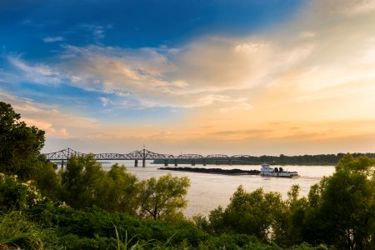Saltwater Intrusion Creates A Drinking Water Emergency For Millions In Louisiana


Dwindling levels in one of the nation’s most important waterways has now led to a drinking water crisis for the millions of consumers who rely on it, and the federal government is stepping in to alleviate the danger.
“President Joe Biden announced … that federal disaster assistance is available for Louisiana, which is working to slow a mass inflow of salt water creeping up the Mississippi River and threatening drinking water supplies in the southern part of the state,” the Associated Press reported. “Biden’s action authorizes the Department of Homeland Security and the Federal Emergency Management Agency to coordinate all disaster relief efforts … Additionally, the declaration will allow for more equipment, resources and federal money to address the saltwater intrusion.”
Historically, the Mississippi’s water flow is enough to keep salt water coming in from the Gulf of Mexico at bay, but ongoing water scarcity over the last two years has changed that. Since this summer, Louisiana residents who live closest to the gulf have been relying on bottled water. And now, the saltwater could reach New Orleans as soon as mid-October.
In addition to Biden’s most recent actions, the looming drinking water crisis has spurred local and federal agencies into action.
“To help mitigate the intrusion, (Louisiana) and the Army Corps of Engineers are working to add 25 feet of height to a 1,500-foot-wide underwater levee in the Mississippi River, which was constructed in July to slow the saltwater’s progression,” CNN reported. “The corps also plan to barge millions of gallons of water daily to local water treatment facilities.”
As drought causes more drinking water issues for more water systems across the country, it’s likely that drastic federal assistance like this will become increasingly common. As is now the case for Louisiana, such systemic water issues clearly call for engineering and treatment facility interventions.
“Federal assistance is ‘necessary to save lives and to protect property, public health and safety or to lessen or avert the threat of a disaster,’ the governor wrote,” per AP. “While officials say they are praying for rain to help increase the velocity of the drought-stricken river they are also taking matters into their own hands — raising the height of an underwater levee used to block or slow the salt water and bringing in 15 million gallons of fresh water to treatment facilities in impacted areas.”
To read more about how water systems across the country are dealing with the challenges posed by drought, visit Water Online’s Water Scarcity Solutions Center.
